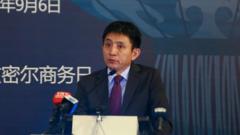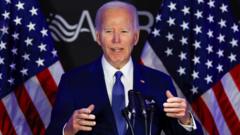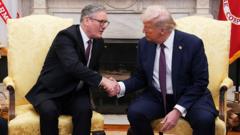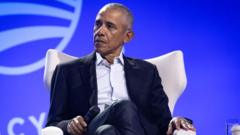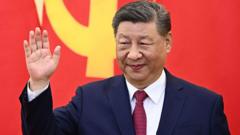The recent pause in tariff implementation by President Trump sees Treasury Secretary Scott Bessent stepping into the spotlight, seemingly changing the narrative around trade policy and its impact on the market.
Power Shifts in Trump’s Tariff Team: Who’s Playing the Good Cop?
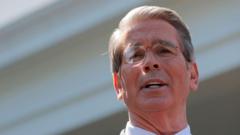
Power Shifts in Trump’s Tariff Team: Who’s Playing the Good Cop?
As the tariff debate heats up, new dynamics emerge among Trump's advisors, leaving markets in suspense.
In a surprising turn of events, U.S. President Donald Trump’s administration paused a broad array of proposed “reciprocal” tariffs, positioning Treasury Secretary Scott Bessent as a key figure in this pivotal moment. Addressing the press on April 9, Bessent, who previously managed a hedge fund, expressed that the decision required “great courage.” However, conspicuously absent from the briefing were Commerce Secretary Howard Lutnick and trade adviser Pete Navarro, who have often taken a tougher stance on tariff discussions, illustrating shifting power dynamics within the White House.
Experts note that Bessent’s rise can be linked to his ability to resonate with Trump’s economic focus, contrary to Navarro and Lutnick's harder-line perspectives. According to William Alan Reinsch, former head of the National Foreign Trade Council, Bessent’s influence stemmed from understanding and addressing the president’s attention to market fluctuations, particularly in bond markets which had previously been overlooked.
The trade atmosphere remains unsettled, as Bessent engaged directly with business leaders over the weekend, including conversations on Air Force One leading up to the announcement. Observers have suggested that Bessent could guide Trump's tariff policy, helping communicate a more cohesive message and potentially reducing market volatility.
In this communications overhaul, the administration has embraced a strategy of expanding the narrative by sending various representatives with differing viewpoints, which some believe has led to confusion within the markets. Haines, a consultant, argued this approach allows for tailored messaging to different audiences, yet warns it could dilute clarity in the long run.
As business and investors seek stability, a more structured communication might emerge, with analysts believing that Bessent could become the primary voice of economic policy, while Lutnick leads negotiations. The recent shifts indicate that, moving forward, there may be an opportunity for a cohesive policy framework that markets increasingly demand.


